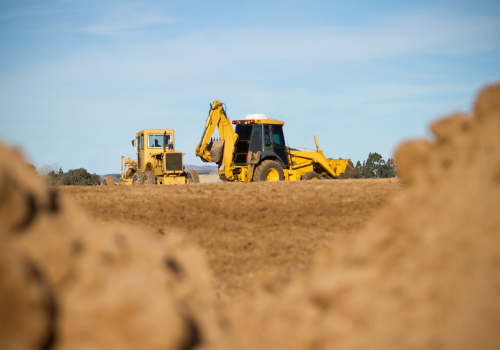The rise in infrastructure projects and urbanization are propelling the construction industry forward. One sector that is benefiting from the new projects is the earthmoving equipment sector.
But in a field where the basic concept doesn’t change, new technology can pose a few hurdles for those creating it and those who will use it. Juston Thompson, product training manager, Hyundai Construction Equipment Americas, knows there are more than a few challenges to need to be addressed.
“Equipment owners, especially contractors, are faced with increased costs of doing business and tightening margins. They are all looking for ways to make their operations more productive—to do more with less,” Thompson says, “With any new technology, it may take some time for the owner to recognize the benefits, and it may take time for equipment users to learn or embrace the new technology.”
Rob Palermo, product manager, Volvo Construction Equipment, says there are skill gaps on both ends that need to be addressed.
“Our industry is in the center of an incredible skills gap, and the percentage of inexperienced workers on the jobsite is on the rise. One of the ways we can balance this is by creating technologies that help make machine operation more intuitive, not only in one machine, but across a product line or category. For instance, Volvo is creating a one-to-one experience between our large and compact equipment—to help operators be able to feel at home with the controls and environment they’re in regardless of size. That helps create efficiencies on the jobsite, and helps boost those profit margins, as well,” Palermo says.
As the earthmoving equipment demand goes up, so will the demand for new, innovative and efficient equipment solutions. The technology available can help contractors with various tasks.
“Construction equipment manufacturers have responded with a variety of technologies. Increased use of telematics and monitoring of machine operation on the job are where the industry is heading. These technologies provide more control and visibility to individual machine operation and also to overall job sites. Some equipment can give contractors the ability to monitor machine activity, analyze fuel consumption, and assess how a machine is being used on the jobsite,” says Thompson of Hyundai Construction Equipment Americas.
“Another example of productivity-enhancing technology is the addition of a highly accurate onboard weighing system as a standard feature on wheel loaders. The weighing system is accurate to plus or minus 1 percent, which allows the operator to get the maximum load on a haul truck the first time, saving time and money and maximizing truck use,” he continues.
With new technology come new instructions on how to use it. “One of the challenges associated with the adoption of new technologies is the training curve. Change is uncomfortable for anyone—so to get buy-in, manufacturers, dealers and owners really need to invest in that training time. Operators are invested in helping the job move forward, too,” adds Palermo.
 Opportunities for Earthmoving Equipment
Opportunities for Earthmoving Equipment
There are a lot of advantages to having advanced tech in earthmoving equipment. “For many customers, the ability to monitor and track their fleet is key. They can monitor fuel consumption, operator usage or even set up boundaries for equipment. Being able to pinpoint the location of machines helps with theft control and also lets an owner know where their equipment is being used. The entire purpose for this technology is to help our customers’ operations become more productive and be more profitable,” Thompson explains.
Palermo echoes the idea of assisting contractor’s operations and helping them be productive through the use of technology.
“Beyond pure production, however, these tools are also helping contribute to safety, giving stronger visibility to the operator so they can remain cognizant of their surroundings. Operators are asked to navigate through different manufacturers’ operating systems and learn new technologies; the goal in creating the tech is to provide helpful, practical information that helps the operator do a better job,” Palermo says.
With the rapidly changing landscape of earthmoving equipment, having a pulse on the market is key. “In the continued tight business climate we’re experiencing, contractors and other equipment owners can ensure they are getting maximum use and optimum performance from their equipment,” Thompson says.
Palermo adds, “Contractors do a good job keeping up with information about what’s new on the market. There are new technologies rolling out frequently that can positively impact profits. I would encourage them to think through their entire team/network when it comes to the new technology and ask away regarding questions to their dealer or manufacturer—what does this technology mean for the way my fleet manager downloads telematics reports, if anything? What does this mean for maintenance for my service technicians? How can I keep them apprised of what they need to know to keep conducting efficient preventive maintenance?”
Knowing how to navigate the new technology can also give you a leg up when looking into the equipment. “So much of this new technology is removing guesswork, empowering multiple parties on the jobsite and giving stronger control over profit margins. It’s an exciting time to be in construction,” Palermo says.
As infrastructure keeps evolving, the need for earthmoving equipment will continue. Smart concepts and advanced technology on the equipment will keep the contractor and the industry moving forward.












